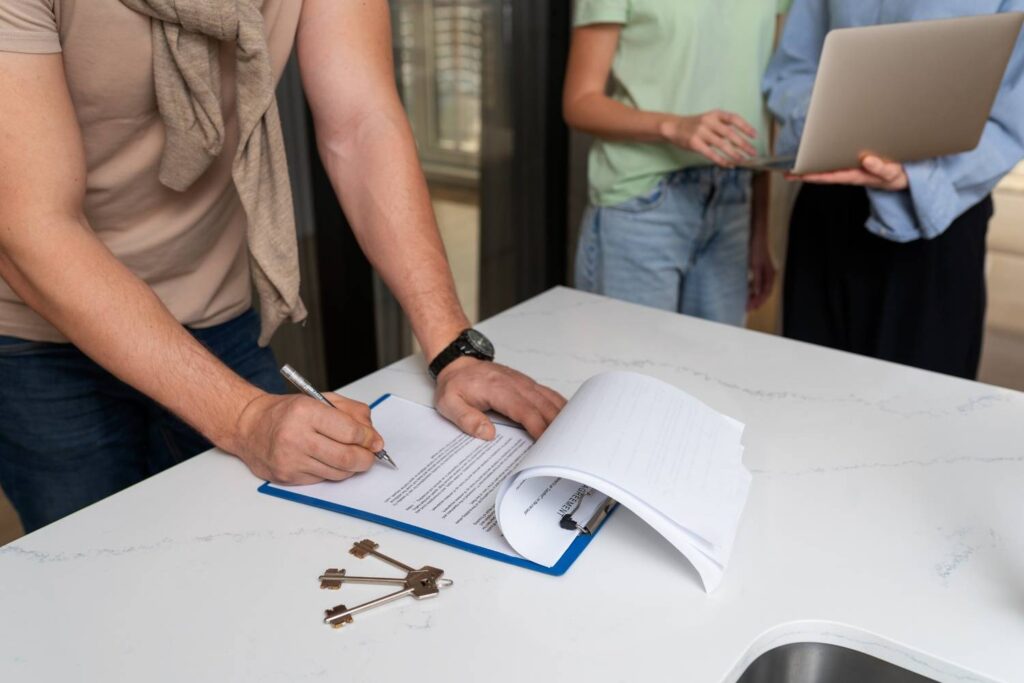Indeed, it is a daunting procedure; on top of that, knowing the lease Agreements could be moratorium inference into that great dark hole. A lease is a form of contract which indicates to both concerned parties in a rental agreement the terms and conditions of their contractual agreement concerning the house. They are a type of protection for tenants and the landlord himself. This is a comprehensive guide to understanding lease agreements for first-time renters or swatting up on the terms after some forgotten exposure.
What is the Lease Agreement?
- Lease agreement lays out the connection between the landlord and the tenant for letting out a property.
- The document brings out rights and responsibilities of either party and establishes a legal relationship between the parties over tenancy.
- Lease agreements usually include. Location of the rental property.
Property Address:
- Rental Term: Refers to the duration of the lease when it is generally month-to-month term or fixed-term (one year, for example).
- Monthly Rent: Amount agreed upon as rent and the date of payment.
- Security Deposit: Refers to amount of deposit, conditions under which it is returned, and allowable deductions.
- Tenant Obligations and Landlord: Responsibilities like maintenance of the premises, repairs, and utility payments.
- Rules and Regulations: Regarding pets, smoking, alterations, subletting, etc.
- Understanding these important elements will help you avoid disputes and will make your renting experience much easier.

Types of Lease Agreements
These rental agreement forms fall under different categories according to the arrangement of rentals and the specific requirements or use as necessity calls for it. Some forms of lease agreements include.
Fixed-Term Lease
This agreement sets a definite period rental period, such as for six months or one year.
Room Rental Agreement
This agreement is used when renting a single room within a larger property, often in shared housing situations. It outlines rules specific to shared spaces and individual responsibilities.
Key Clauses to Look Out For
Understanding the fine print in a lease agreement is essential. Here are some important clauses to review carefully:
Rent and Payment Terms
Ensure the lease specifies:
Monthly rent amount
Payment methods
Late fees or penalties for missed payments
Security Deposit Terms
Look for details about:
The deposit amount
Conditions for its return
Permissible deductions (e.g., damages, unpaid rent)
Maintenance Responsibilities
Understand who is responsible for:
Repairs and upkeep
Lawn care or snow removal (if applicable)
Entry and Privacy
Check for policies regarding landlord access to the property, including notice requirements for inspections or repairs.
Termination Conditions
Review the terms for breaking the lease, including potential penalties or required notice periods.
Rules and Restrictions
Take note of:
- Pet policies
- Smoking restrictions
- Limits on alterations or redecorating
- Common Mistakes Renters Make
Avoid these common pitfalls to ensure a positive renting experience:
Not Reading the Lease Thoroughly
Many renters sign agreements without fully understanding the terms. Take your time to read and ask questions about anything unclear.
Overlooking Additional Fees
Beyond rent, there may be extra costs, such as parking fees, utility charges, or penalties for early termination. Ensure you understand all potential expenses.
Failing to Document Property Condition
Before moving in, document the property’s condition with photos or videos. This can protect your security deposit by providing evidence if disputes arise.
Ignoring Renewal Terms
Be aware of automatic renewal clauses or notice requirements for ending the lease. Missing deadlines can result in unwanted extensions.
Assuming Verbal Agreements Are Binding
Only written agreements included in the lease are legally enforceable. Ensure all promises made by the landlord are documented.
Tips for Negotiating a Lease Agreement
Do Your Research
Understand local rental laws and average market rates to strengthen your negotiating position.
Ask for Clarifications
If any clauses are unclear or seem unfavorable, don’t hesitate to ask for modifications.
Request Flexibility
Inquire about adjusting terms such as rent increases, lease duration, or pet policies to better suit your needs.
Get Everything in Writing
Ensure all negotiated changes are documented in the final lease agreement.
What to Do Before Signing
Before putting pen to paper, take the following steps:
- Inspect the Property: Check for any existing damage, functionality of appliances, and overall condition.
- Verify Landlord Credentials: Ensure the landlord or property management company is reputable.
- Understand Local Laws: Familiarize yourself with tenant rights and landlord obligations in your area.
- Keep a Copy of the Lease: Retain a signed copy for your records.
What to Do If Issues Arise
If problems occur during your tenancy, address them promptly:
- Communicate with the Landlord: Report maintenance issues or disputes in writing to create a paper trail.
- Know Your Rights: Research tenant protections in your jurisdiction.
- Seek Legal Advice: If disputes escalate, consult a legal expert or tenant advocacy group.
Final Thoughts
Lease agreements are the foundation of any rental arrangement. By understanding the terms, asking the right questions, and avoiding common mistakes, renters can secure a safe and enjoyable living environment while protecting their interests. Use this guide to approach your next lease with confidence and make the most of your rental experience.









